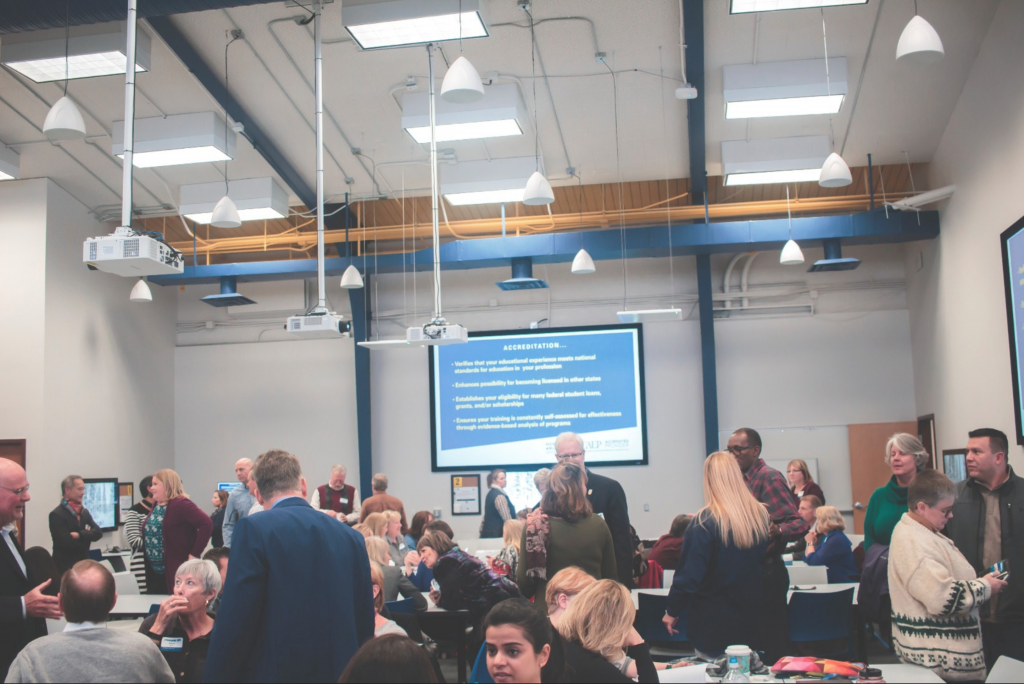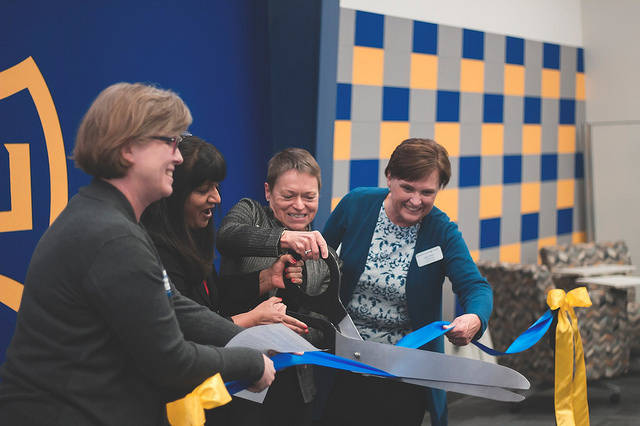On Wednesday, Northern Arizona University’s College of Education (COE) opened a new technology-enhanced classroom while celebrating the college’s national accreditation through the Council for the Accreditation of Educator Preparation (CAEP). COE faculty will begin integrating this technology into their curriculum for students to bring to their future classrooms.
The classroom features eight screens, five TVs, three projectors and five microphones linked through a state-of-the-art audio system specifically designed for the space. Made for a collaborative and active learning experience, the space provides a more flexible and connected education environment between community campuses and Flagstaff. All equipment in the room can be individually controlled, and users can easily share information between screens.
Kegan Remington, classroom support and ITS team lead, said the classroom is laid out to “get the technology out of the way so that you can do what you do best, teach.”
The project to convert the old curriculum lab into the new technology-enhanced classroom began only one year ago. Since then, a team has spent hundreds of hours turning Eastburn Education room 190 into a state-of-the-art facility. Students using this classroom will now have the tools necessary to take control of their learning environment.
The ribbon cutting Wednesday also was a chance to highlight NAU’s accreditation, making it the only university in the state to have a CAEP-accredited program.

Using technology in the classroom is a priority for CAEP programs. The classroom will be used for EDF 200, Foundations of Education starting this spring, providing teaching candidates with more resources earlier into their degree.
Cynthia Conn, assistant vice provost for the professional education programs, said they are hoping to help Arizona’s teacher shortage through the CAEP accreditation by continuing their work with diverse, high-need schools and maintaining partnerships with the school districts, NAU and community campuses.



